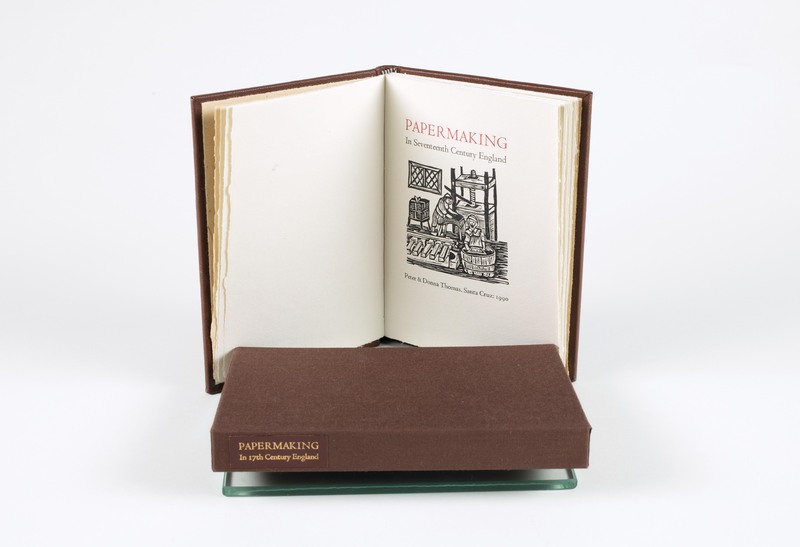A55. Papermaking in Seventeenth Century England
A55. Peter Thomas. Papermaking in Seventeenth Century England. Santa Cruz, California: Peter & Donna Thomas, 1990.
17 x 12.5 cm (6 ¾” x 5”), 42 pages, 200 copies.
Binding: Full-bound in brown goatskin. Title in gold on cover. Housed in a slipcase covered in brown cloth. Paper: Ivory, handmade by Peter Thomas. Printing: Letterpress. Typography: Hand set monotype Centaur and Arrighi; titles and italic text in red. Illustration: Five linocuts by Donna Thomas. Two paper samples tipped in.
“The text is diary entries by John Evelyn and Celia Fiennes recording their visit to papermills with commentary written by me. While researching for the text of Shakespeare on Papermills [A48] I came across references to the diary entries used in this book. At an International Association of Paper Historians (IPH) meeting I began to consider the importance of the diary entries, realizing that before Diderot’s Encyclopedia these were the only descriptions we had of the process of English papermaking in the 17th century. Ray Tomasso’s concurrent search to discover what a brown paper looked like inspired the inclusion of his brown paper sample. The second sample was paper made in England in the 17th century, a page taken from a water-stained and incomplete volume of Joseph Keble’s Reports in the Court of Kings Bench at Westminster, from the XII to the XXX year of the reign of Our late Sovereign Lord King Charles II published in England in 1685.”
